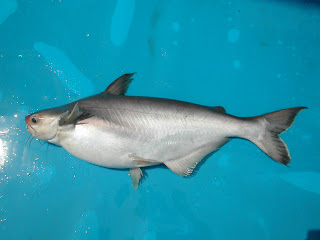An American Associate Editor on YumSugar.com, Susannah Chen wrote: “Don’t think that counterfeit bags and cosmetics are the only phony items on the market. Recent evidence suggests that the fake fish trade is rampant, too.
Studies and survey documents from private national universities to state regulation agencies show escolar masking as white tuna, tilapia sold as red snapper, and emperor fillets marketed as grouper in staggering numbers, by both food distributors and dining establishments.
Suppose that steamed red snapper sashimi you're reveling over is merely your garden-variety tilapia. Would you want to know the truth about its mislabeling — or, since you're enjoying it anyway, would you prefer to turn a blind eye?”
Lebanon imports 75% of its seafood, some are recognizable by regular consumer such as gilthead seabream and European seabass (Ajaj and Bra’a).
The big question is, does a related Lebanese authority enforce enough recognition and identifying measures? What about fillets and value added products such as finger-fish or fish-nuggets, these are concealed items and needs professional scrutinizing for a correct designation.
Consumers would definitely want to know the fish they are eating, mislabeling in Lebanon is mainly done in fish fillets, and therefore I will concentrate on this issue.
Sales number one in the Lebanese fish fillets market, which is sold in an appealing package with opaque white flesh and mostly labeled as “WHITE FISH FILLETS” and “HAMOUR FILLETS” on the front side of those “buy-me” packages.
Have you ever wondered why those fillets are odorless with a neutral taste? And how come they are fiercely white?
The answer is simple, BLEACHING, yes those fish fillets are bleached with “Food Grade Bleacher CHLORINE_DIOXIDE”, yes it is an approved method, but was it mentioned on the package? This is why it is flawlessly white, this why it is odorless and this why it is tasteless.
Do those wrappings state the common name of the fish? Some does, on the back, in small letters, as if to hide it and the statement bare the following fact:
FRESHWATER FARMED FISH – BASA or Pangasius
BASA? PANGASIUS? Yes, The basa fish, Pangasius bocourti, it is a type of catfish. Basa are native to the Mekong River Delta in Vietnam and Chao Phraya basin in Thailand. Also pangasius Pangasius hypophthalmus (Iridescent shark) and Pangasius pangasius (Yellowtail catfish).
I wonder how many Lebanese would enjoy this fish as a feast in the form of whole round.
Many Lebanese know this fish when they have bought “freshwater sharks” for their aquariums.

We need powerful regulations to oblige importing companies to reveal clearly the type of the fish (as well as a picture) on the front side of package and to state processing techniques including the existence of the bleaching action and then allow the customer to decide whether to purchase or not.
Lebanese are hard to please
You Lebanese people should alter that old misconception about the color of the fish meat, white does not mean delicious or healthy nor has higher nutritional benefits. Most Lebanese find grouper irresistible, LOUKKOZ, no? Well look at how Loukkoz fillet appears when fresh.
 |
| Grouper fillet |
Watch this video carefully.





No comments:
Post a Comment